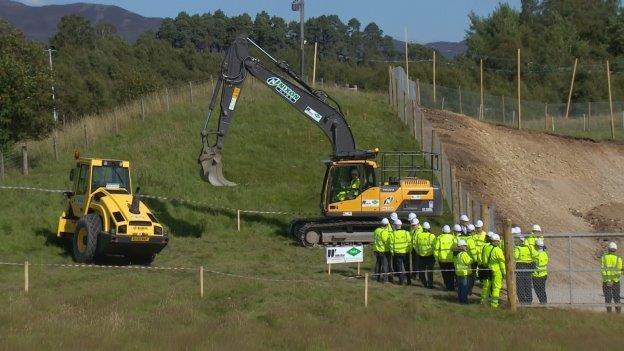Battle of Killiecrankie artefacts found during A9 dualling survey
- Published
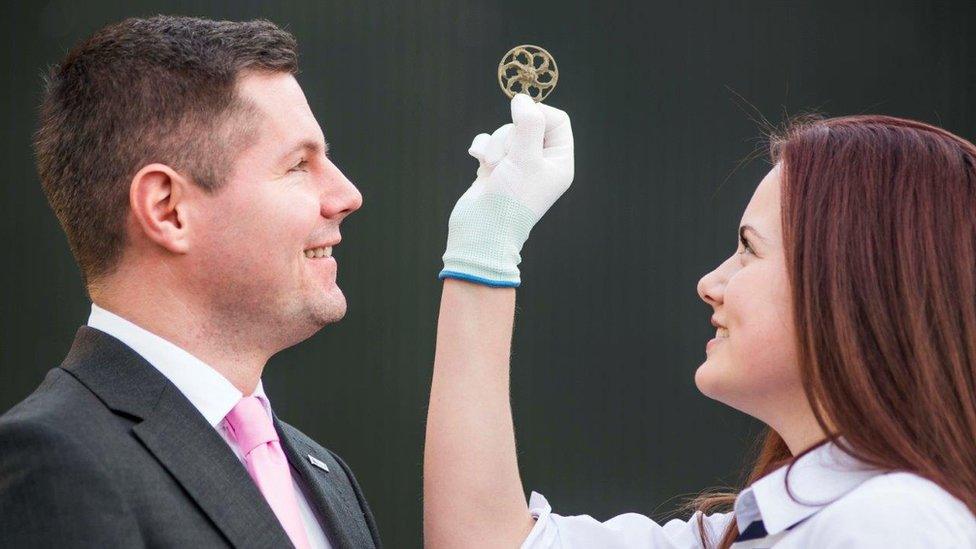
Transport Minister Derek Mackay and Pitlochry High School pupil Charlotte McIntyre with one of the artefacts
Artefacts linked to the Battle of Killiecrankie have been unearthed during a survey carried out as part of plans to dual the A9 trunk road.
Items including a copper alloy pendant, horse shoes, buttons, and musket munitions were found at the site of the 1689 battle.
The survey was carried out to provide information on dualling the road between Killiecrankie and Pitagowan.
Transport Minister Derek Mackay said it "opened a window on Scotland's past."
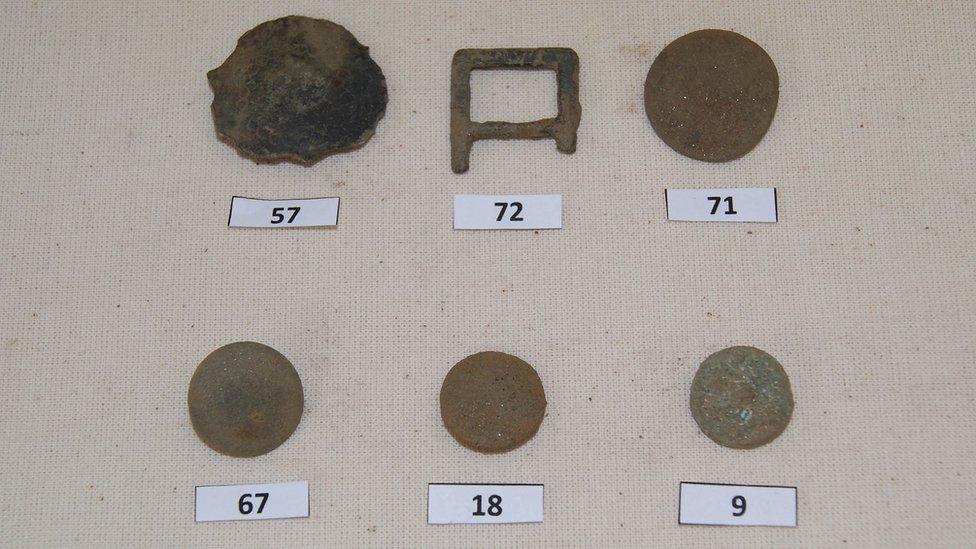
A buckle and buttons were among the items unearthed in the survey
The battle took place on 27 July 1689 between a Jacobite army under the command of John Graham of Claverhouse, 1st Viscount of Dundee, 'Bonnie Dundee', and a government army commanded by General Hugh Mackay.
Both armies were attempting to reach Blair Atholl to use it as a base for future operations.
The Jacobites are thought to have lost 800 men, with around 2,000 casualties among the government troops.
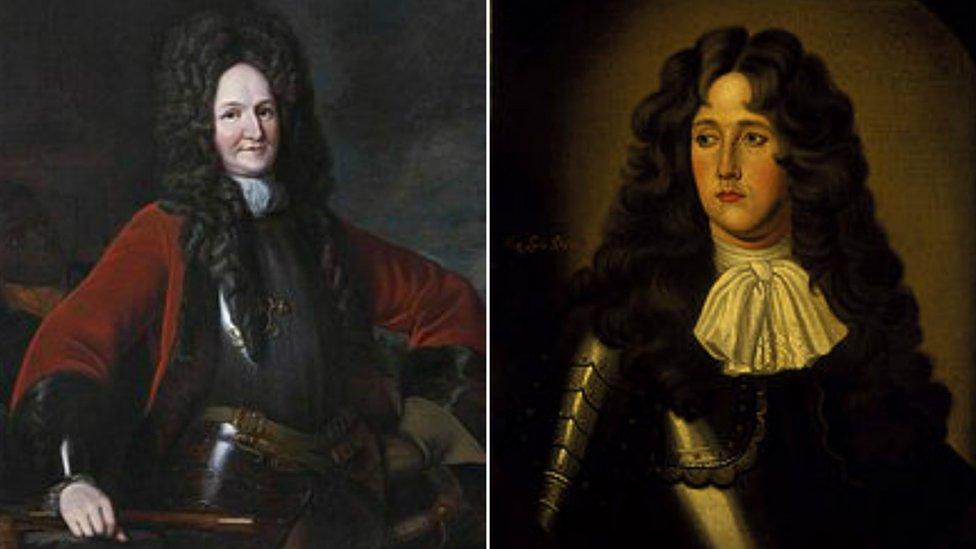
General Hugh Mackay and John Graham, 1st Viscount Dundee led their sides during the battle
Mr Mackay, who showed some of the artefacts to pupils at Pitlochry High School, said: "Thanks to the survey work, experts are shedding more light on the Battle of Killiecrankie which took place over three hundred years ago, bringing 'Bonnie Dundee's' Jacobite victory to life.
"They are able to offer more information on the battle including the possible route soldiers took during the battle, potential cavalry positions, where the key skirmishes and close quarters fighting took place, and the likely retreating route taken by the fleeing government forces.
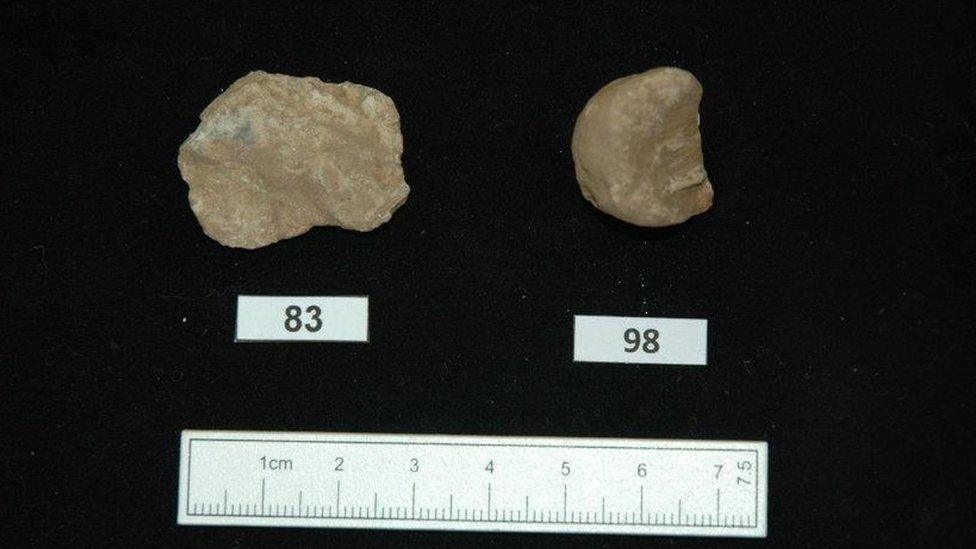
Musket munitions believed to be from the Battle of Killicrankie were recovered
Mr Mackay said the design work for the dualling programme was "progressing well."
He said: "Next week locals and road users will get the chance to view the preferred routes for three of the sections to be dualled - Killiecrankie to Pitagowan, Pitagowan to Glen Garry and Dalwhinnie to Crubenmore."
Warren Bailie, project manager at GUARD Archaeology Ltd, who carried out the metal detecting survey said:"We and our partners involved in the survey have enjoyed working on such an iconic, nationally significant battlefield site and playing a part in helping improve our understanding of this important event in Scotland's past."
Construction work on the first of the A9 dualling projects between Kincraig and Dalraddy began last summer and is expected to be completed in summer 2017.
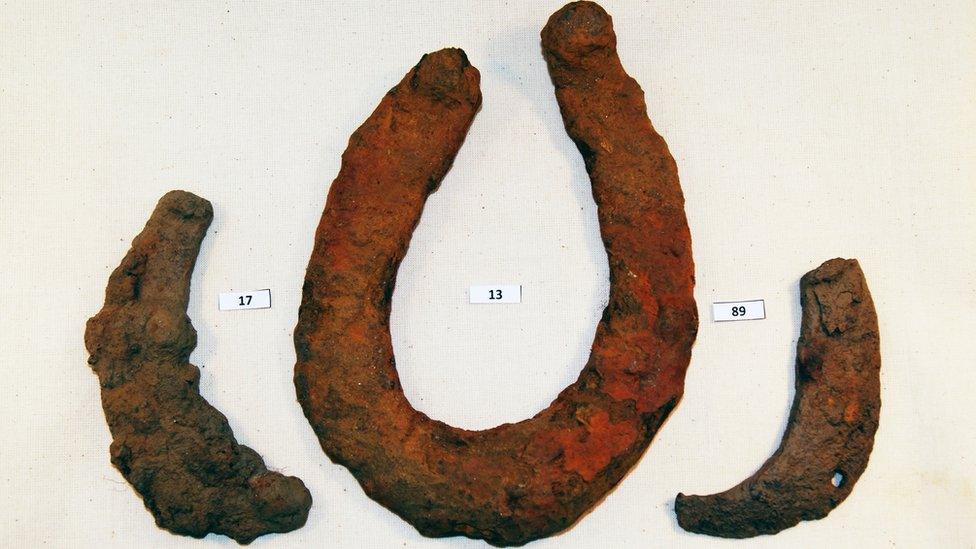
Possible 17th Century horseshoe and horseshoe fragments
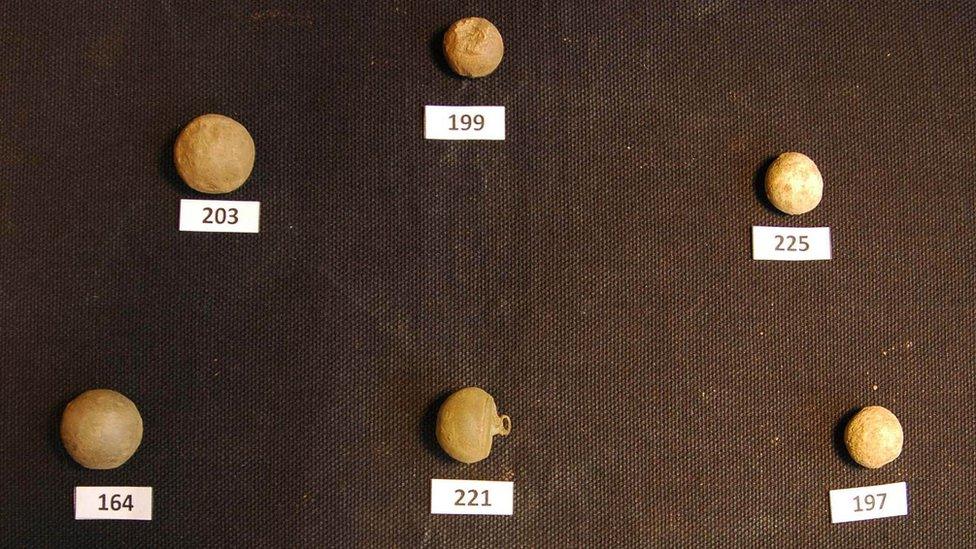
Lead munitions linked to the Battle of Killiecrankie were also unearthed
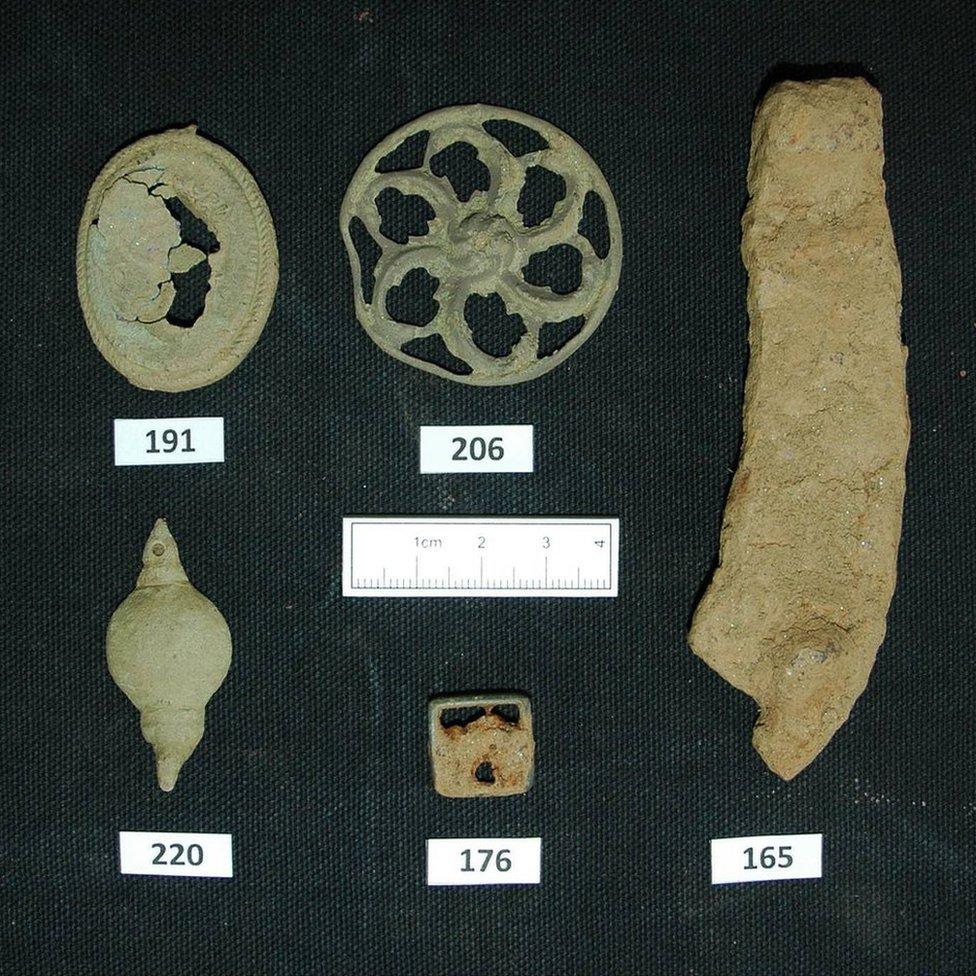
Horseshoe fragment (165), harness boss (206), pendant (191), sword belt fitting (220), and shoe buckle (176)
- Published9 March 2015
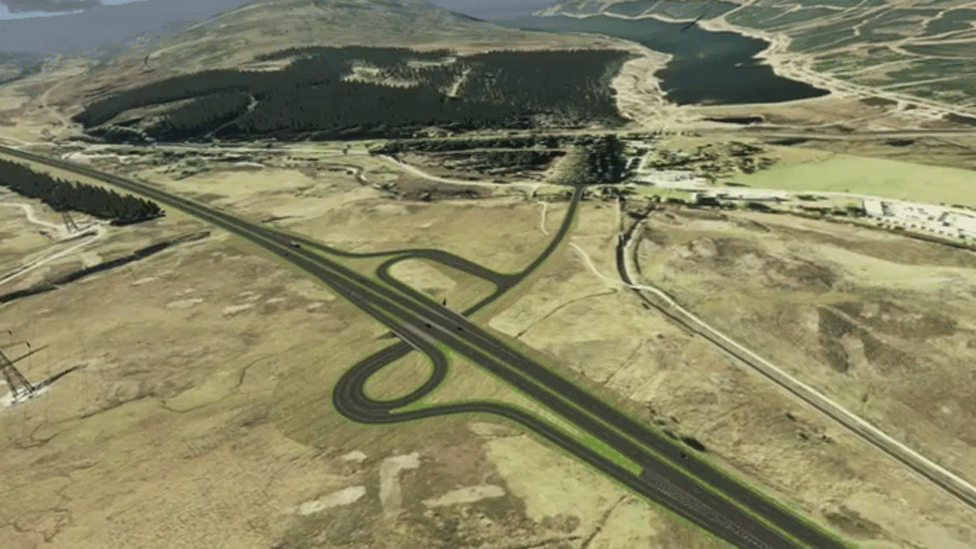
- Published10 September 2015
